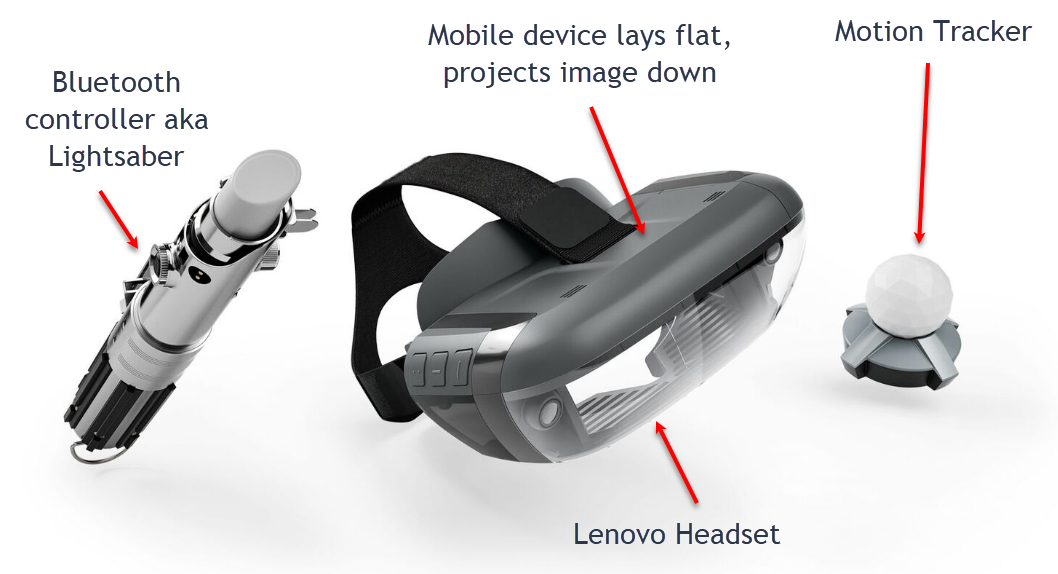HoloKit was created by Botau Hu, a brilliant new tech innovator that will surely experience great success in the industry. It's a wearable device that projects your mobile devices screen into a 3D holographic projection. This holographic projection is then overlaid onto the user's view, thus allowing them to experience a more immersive environment that often teeters on the edge of VR. The following is an illustration of what a HoloKit looks like fully assembled:

Fully assembled HoloKit
As you can see from the diagram, the device is quite similar in construction to that of Google Cardboard. Cardboard was Google's way of democratizing VR to the masses, and it worked. If you are unable to quickly get a HoloKit, you can also use a modified Google Cardboard. Just cut a slot in the cardboard for the device's camera and ensure not to move around too much.
One of the first things you will note about most mixed reality headsets is the ability of the user to see through their environment. This allows the user to still be spatially aware of their surroundings, while experiencing what could be an almost virtual experience. Since a user is more aware, MR devices are generally considered safer, and the user is much less prone to experiencing motion sickness and/or falling down. Currently, VR devices are not considered appropriate for those under the age of thirteen due to those issues.
VR motion sickness is often more a result of poor app performance or resolution. As it turns out, visual artifacts caused by a lagging app or poor resolution are responsible for placing additional strain on the user's brain. That strain will then manifest itself in the form of a severe headache or nausea. In the early days of VR, this was a big problem, but now the technology has improved enough for most users to be able to use an app for several hours at a time.
The Mirage Solo headset was developed by Lenovo for a game by Disney called Jedi Challenges. Jedi Challenges is really more a proof of concept and showcase for mixed reality and what is possible. It will likely also be a collector's item, since it is associated with the new Star Wars franchise and just happens to correspond to an up-and-coming tech revolution. The only truly unfortunate thing about this project is that Lenovo never released a developer kit; hopefully they will rectify this is in the future.
The following is an image of the Lenovo Mirage Solo headset:

Jedi Challenges Mixed Reality game
In order to complete the exercises in this chapter, you won't need HoloKit. HoloKit allows for you to switch from AR to MR/VR mode at the press of a button. This means that you can still work through all the exercises in this chapter. However, it does mean that you won't experience the magical experience of MR. In the next section, we set up HoloKit to work with ARCore and get ready to build our tech demo.
